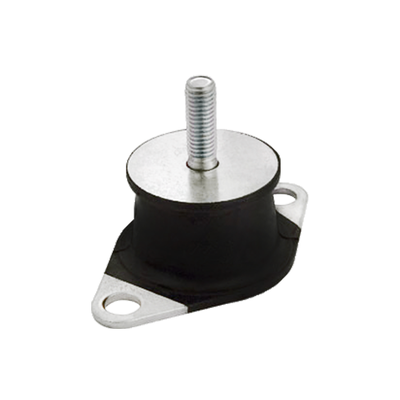HomeRubber Bonded Parts
Rubber Bonded Parts
Wespo has engineered techniques to bond rubber with a variety of metals and fabrics. This reinforcement enhances strength, flexibility and pressure/temperature resistance of the bonded part.
Rubber Bonded Parts

Rubber To Metal Bonded Parts
Wespo rubber -to-metal bonded parts provide a special type of seal. A single component is created out of two components by spraying rubber onto a metal substrate.

Fabric Bonded Parts
Western Polyrub has engineered techniques to bond rubber with a variety of fabrics. This reinforcement enhances strength, flexibility and pressure/temperature resistance of the bonded part.

Rubber To Plastic Bonded Parts
western polyrub manufacture rubber-to-plastic bonded parts consist of a rubber component and a plastic component. It is one of the best ways to produce complex geometries with relative ease.

PTFE Bonded Parts
PTFE, commonly known by the trade name Teflon®, is highly chemically inert and hence is very difficult to bond as it is “non-stick” by nature.

Adhesive Tape Rubber Bonding
Silicone, with its unique properties makes a great sealant in keeping water and other solvents out in extreme temperatures. However, the problem arises when Silicone has to be backed with an adhesive tape.
FAQ’s
Your Questions Our Answers

An inflatable seals operates by introducing an inflation medium. Upon introduction of the inflation medium, it quickly expands to the striking surface, affecting a positive seal. When the inflation medium is removed, the seal retracts naturally to the deflated molded configuration. This provides clearance for free movement of one or both surfaces.
An inflatable seals has several advantages over other sealing methods:
• It provides a leak-proof closure, yet allows clearance when needed.
• It simplifies the design of the structure and hardware.
• It minimizes the need for close machining and/or fabricating tolerances.
• It is not subject to a compression set which negates the effectiveness of other seals.
Yes! Essentially all Western Polyrub Inflatable seals are custom rubber seal designs. After over 30-years in business, more than 8000 unique products have been developed. Take a look at all of the unique designs at inflatable seals product category.
It’s important to consider the application’s environment: gas temperature, radiation and abrasion exposure when maintaining your inflatable seal. Learn more about these application environmental considerations.
Generally for nominal pressure applications we suggest customers to avoid fabric-reinforced seals so as to avoid high costs. But if your differential pressure requirements are higher than 7-8 Bar then we suggest customers go for fabric.
Generally for nominal pressure applications we suggest customers to avoid fabric reinforced seals so as to avoid high costs. But if your differential pressure requirements are higher than 7-8 Bar then we suggest customers go for fabric.
